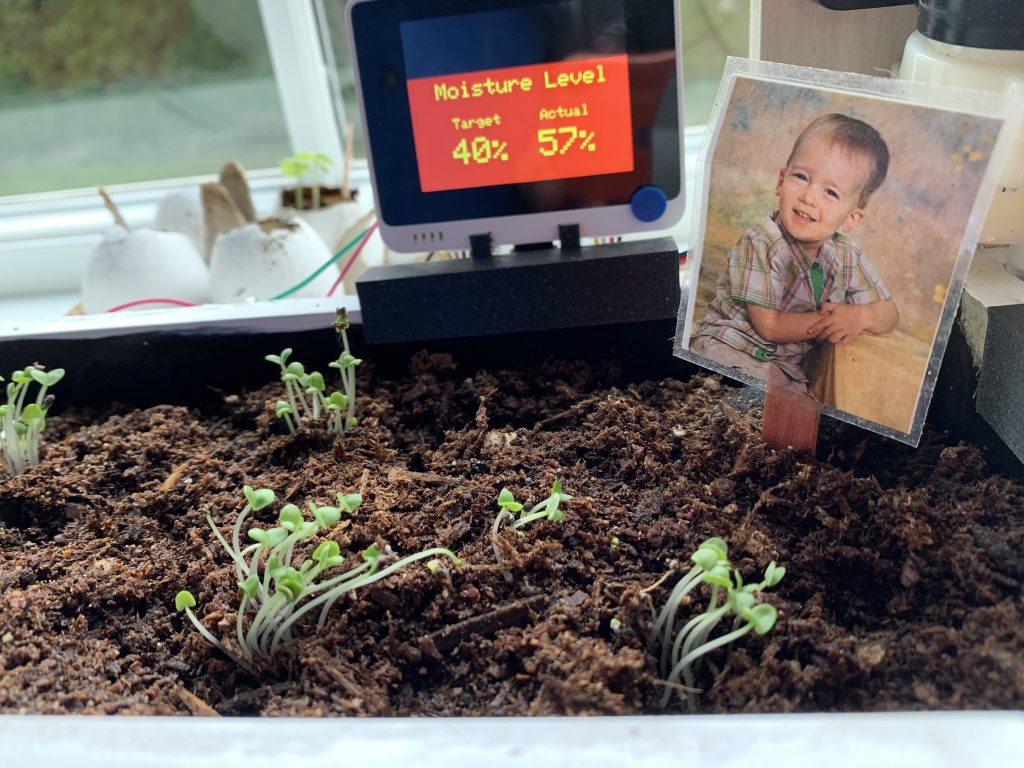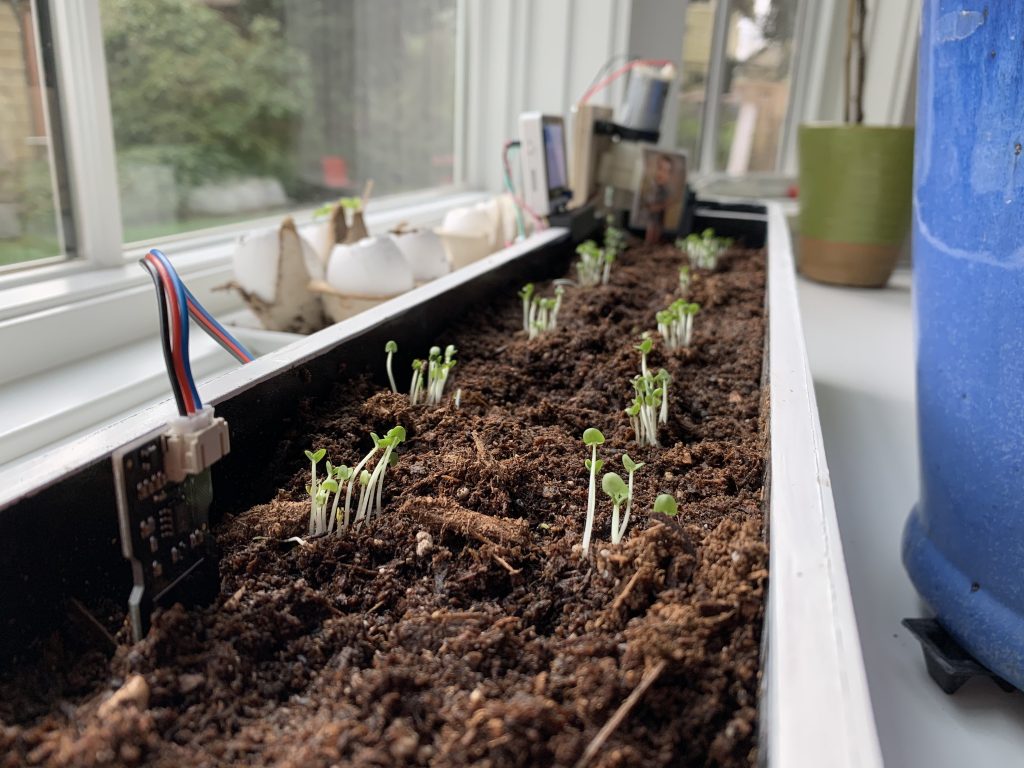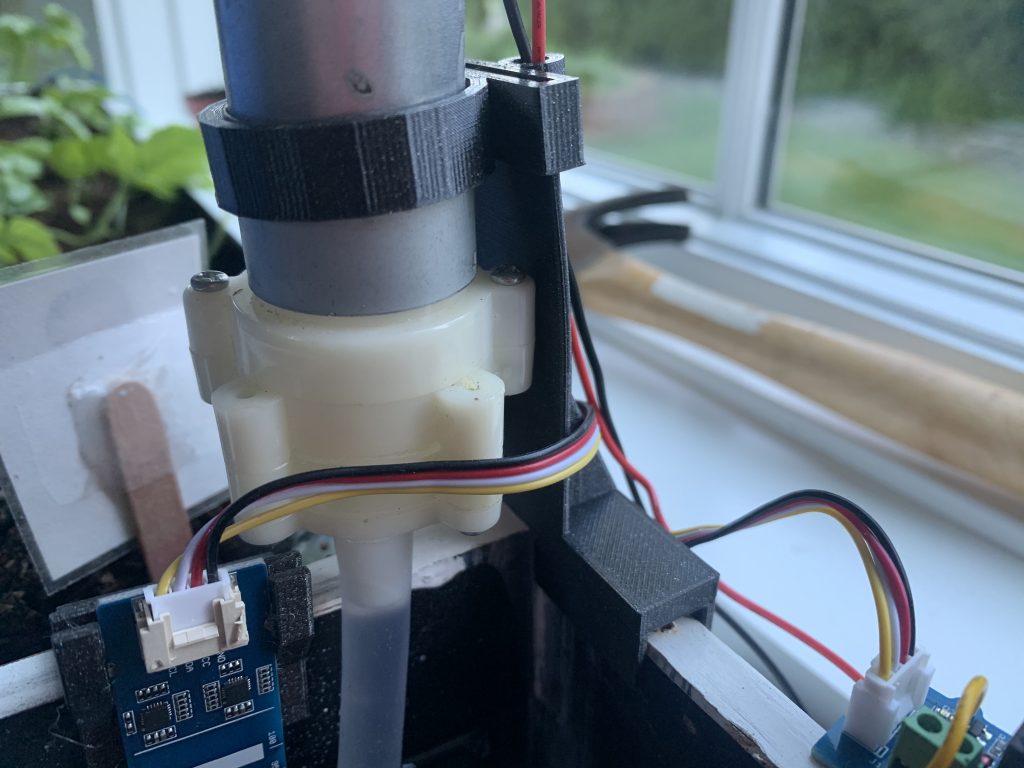Ilove gardening but I hate having to constantly water plants. For years, I've longed for vegetables that would just water themselves.
As a technologist, I've often thought "this should be easy; just wire up a microcontroller, a pump and some sensors and make a self-watering plant system."
As a technologist, I also know that it is never as easy as I think it is.
On and off for the past few years I've played around at this. Years ago I bought an Ecoduino kit to see if it worked. It did but then one day it just crashed viciously and wouldn't restart. Plus, I wanted a bigger system (multiple plants vs. one) so I figured I'd roll my own.
I started making a self-water plant system using Micropython but I didn't get it finished - and then we had to move for a while as our house got renovated and the Seeed Wio Terminal came out. I immediately coveted one (more on that later) and decided to redo the self-watering plant system using that.
I finally got it done. Some pictures and thoughts below; the code is open-source if you want more.
Before I go any further though, let me be clear about this. There are lots of commercial self-watering systems out there that work better than mine and are a lot cheaper (both in time and money). For me, this is a labor of love; I dig the tech and like to make things. The journey is the destination in building this.



1. The Wio Terminal
In the top photo above, you can see the Wio Terminal. This thing is an incredible dev board; it dramatically simplified everything vs. when I tried to create the same system on an original Micropython board.
The combination of built-in display, at least 8 inputs (3 buttons on top, 4-way joystick + button on joystick) and two ports that are compatible with the Grove ecosystem (Seeed's proprietary sensor hardware) dramatically speeds up your design time. I used only the built-in input and didn't have to worry about wiring up any buttons. I used the Grove port to connect to a preconfigured relay that handled current, resistance, etc. for me. No worry about current, etc. It's literally plug & play.
Then add in the screen. No need to worry about writing up output; just follow the YouTube tutorials and you're off.
This is a really fun way to make; the feedback between making a change in your design and seeing the impact on the system is really quick because you don't need to wire up much in order to make it work. I see myself buying many more of these in the future.
2. Making in 2021
There's an old William Gibson quote:
The future is already here - it's just not very evenly distributed.
Working on this project at times felt like that. The Wio Terminal feels a bit like an artifact from the future. It simplified making things so much vs. every other dev board I've used before (I'm a rank amateur; maybe it wouldn't be so impressive if I had more time for this stuff-but then again, I love that it lets me do this in my spare time and get to a working prototype instead of slogging through failed connections).
Add to this 3D printing: I needed brackets to mount the Wio Terminal and the water level sensor. I used TinkerCad on an iPad to design the brackets (Terminal, water level sensor). I then AirDropped it to my laptop and minutes later they were being printed on a Czech 3D printer. It feels insane that I can do CAD on an iPad and will into existence physical objects that have never existed before.
Now lets bring in that Shenzen ecosystem again. I realized partway through the project that a water level sensor would be a great simplifier (vs. using a water flow monitor); Seeed not only had one compatible with the Terminal, but it was at my house within 2-5 business days after flying across the world. I only have time to make things on weekends so Shenzhen is now the equivalent of driving to my local Fry's (RIP - although it had been failing for years up here in Seattle).
Being at the intersection of these technologies, supply chains and ecosystems made me feel like I was on the vanguard of something new. You don't have to squint too hard to see a future where it will be a lot easier to prototype anything you want.
I was reminder of another quote:
You can see the computer age everywhere but in the productivity statistics.
Robert Solow trolling before we knew what trolling was
We're at the exact opposite now. The experience I had building this was literally watching time and space horizons shrink in front of me. I can now do in days what used to take months if it was even possible. I now truly get why so many people have been Messianic when describing the potential of the "Maker Movement."
Update 4/4 - I added a new .stl file to the repo that replaces the block of wood holding the motor with a plastic bracket:
